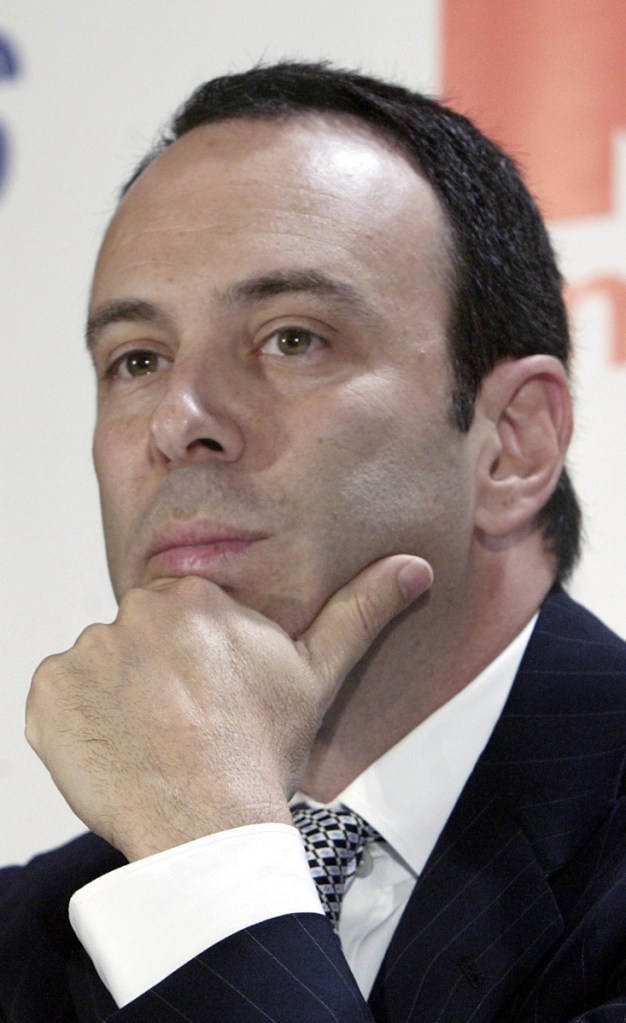NEW YORK — As Sears teeters on the brink of collapse, one man stands at the center of the fight for the future of the iconic retailer.
Eddie Lampert plays several often-conflicting roles in what could be the final chapter for the company that began as a mail order watch business 132 years ago. He’s been chairman, CEO, lender, and largest shareholder – all at the same time. And he stands to win big if Sears survives.
The fate of Sears – and its Kmart brand – could be decided Monday in a law firm conference room high above Manhattan, a block from Central Park. There, those who are owed money by Sears are considering Lampert’s last-ditch plan to preserve 425 stores and 50,000 jobs at a bankruptcy auction.
Lampert, the only one to put forth a proposal to rescue the floundering company in its entirety, has sweetened his bid for Sears to more than $5 billion and added a $120 million cash deposit through an affiliate of his ESL hedge fund. His original bid of $4.4 billion was rejected by the company’s board.
He has publicly said he wants to save Sears, which filed for Chapter 11 protection in October, because he says he believes there’s still potential for the company, despite his past and failed efforts to turn it around.
“For as long as I have been involved with Sears, I have cared deeply about the company, its associates and the people they serve,” Lampert said in a statement sent through ESL. “While the opportunity I saw from the start for Sears to benefit from the disruptive changes in retail and technology has not worked out so far, it is still there to be taken. Every transformation involves perseverance and risk, but I am hopeful that we can execute better and faster on the smaller platform we are bidding on … There is every reason to fight for its future.”
But plenty of others think that sheer financial gain is behind his perseverance.
He stands to realize a big tax advantage if he keeps Sears alive by using the company’s years of net operating losses to offset future taxable income if one of his other companies takes it over, says David Tawil, president and co-founder of Maglan Capital, which follows distressed companies. Tawil and others also think Lampert wants to buy the company so he, as the only shareholder, can then control liquidation of the remaining assets.
Some would argue he’s been doing that all along by selling off some of Sears’ most prized brands like Craftsman. The company also spun off Lands’ End. ESL has maintained that all shareholders of Sears benefited from those moves because they injected much-needed liquidity into the business.
Four years ago, the company created a real estate investment trust to extract revenue from its properties. It sold and leased back more than 200 properties to the REIT, in which Lampert is a significant stake holder. ESL said that Sears received an instant influx of $2.7 billion in capital from those transactions.
“This company has been insolvent for years, except he’s been playing these games,” said Steve Dennis, a strategic retail adviser who held various executive positions at Sears for 12 years until 2003.
If Sears goes to straight liquidation, Lampert would be vulnerable to any legal claims stemming from deals that he previously made to sell some of the company’s assets, another reason why he may be trying to dodge that outcome, according to H. Jeffrey Schwartz, principal at law firm McKool Smith P.C., which represents several Sears suppliers.
“He would be fair game,” said Schwartz.
Many of the retailer’s unsecured creditors, which include suppliers and landlords, are pushing for liquidation because they believe Sears is worth more dead than alive.
Send questions/comments to the editors.



Comments are no longer available on this story